BRUNSWICK — On a cold February morning, a dozen artists sit around a large work table in a light-filled studio at Fort Andross Mill. Thermoses of tea and coffee, a plate of blueberry bread and a box of doughnuts are passed around, along with sketches of banners the artists have gathered to create.
Eight hours later as the day fades to dusk, they’ve completed a colorful 7-foot banner with images of people standing side by side and the message “Stand Together for Racial Justice.” The finished banner and another completed Sunday will go into action right away. The group Central Maine Showing Up for Racial Justice, part of a national network that organizes white people for the cause, will parade the banners at a high-traffic intersection in Auburn during Monday’s rush hour.
The banners represent the latest effort of the Artists Rapid Response Team. The activist artists from Maine gather monthly to make art for progressive nonprofits across the state and, increasingly, around the country. In four years, the group has made close to 200 banners for use at demonstrations, rallies, fairs and other community events to articulate an image or message.
“I have been a lifelong activist and an artist, and to be able to find a way to put my worlds together and collaborate is really just wonderful,” said Nora Tryon of Kennebunkport, who has been involved since the group’s inception four years ago. “I am a person who wants to make positive change, who wants to impact the world and who cares a lot about issues like human rights and education and the environment.”
A project of the Union of Maine Visual Artists, ARRT meets at a private, spacious and sun-filled studio at Fort Andross in Brunswick. They take requests from activist organizations around Maine that are preparing for rallies or protests and want banners to help spread their message.
About a dozen artists typically show up. Many live within an hour’s drive of Brunswick, but some come from as far as Berwick, about 75 miles away. They arrive with ideas, which are hashed out around the table.
The discussion is animated.
Lee Chisholm, a science and math teacher from Friends School of Portland, wants to make a poster with an image of a “bomb train,” which he sees as a metaphor for the dangers of fossil fuels. He’s active in 350 Maine, a grassroots movement concerned about climate change and the resulting environmental crises. The banner that he’s working on, and others like it, will hang at railroad crossings across the Northeast this spring and summer in advance of the three-year anniversary of the Lac-Megantic rail disaster in Quebec, when a train transporting crude oil derailed, resulting in a massive explosion that killed dozens of people.
GIVE-AND-TAKE ON THE MESSAGES
In one of Chisholm’s sketches, a train is rambling through town with a lit fuse. In another, the town is on fire, with houses exploding and bodies in the air.
“I like the idea that the houses are there and the town is blowing up,” said Anita Clearfield, an artist from Durham.
Other artists nod in agreement. “I was reading about this last night,” said Natasha Mayers of Whitefield. “Do you know it vaporizes people? They didn’t find a lot of bodies.”
There’s concern that the image of the train might cloud the message about fossil fuels. Someone asks, is the banner protesting trains that transport oil, or raising concerns about the dangers of fossil fuels?
It’s both, Chisholm says. The larger message is about fossil fuels, but the banner is being prepared for rail protests. They agree the image is strong, and Chisholm begins a larger sketch, which he later will transfer to a long, horizontal piece of shower curtain liner, tacked to a studio wall, that will hold the paint and withstand the rigors of outdoor protests.
ARTISTIC CONTROL, PUBLIC VISIBILITY
ARRT grew from an idea that Mayers had kicked around for several years. She’s widely known for her community and activist art projects and has fulfilled hundreds of requests for banners, posters and murals. A longtime volunteer, she happily obliged.
But she began thinking about a better way, and explored asking Maine nonprofits to apply for grants to hire resident artists. At about the same time, the Union of Maine Visual Artists, of which she is a dedicated member, hosted a series of printathons and drawathons in galleries across Maine.
Mayers liked the camaraderie of those events and thought that banner-making would retain the energy of the group moving forward. The Union of Maine Visual Artists took on the project and secured funding through the Maine Community Foundation. ARRT began with a budget of about $1,000. The annual budget has grown to $15,000.
That money is used for materials and to pay artists who are UMVA members a stipend of $75 per session, plus gas money. ARRT also accepts donations from groups that request banners but does not charge for its services.
In part, that’s to retain artistic control. ARRT solicits suggestions from organizations it works with, and it is helpful during the design process to know where, when and how the banners will be displayed. But the artists are particular about their work, and they treat it as a serious art endeavor.
“We tell them we’re not an ad agency,” Clearfield said. “We’re not making a logo for you. We don’t want it hanging in your office. We want it out in the world.”
They’ve achieved their goals. ARRT has made banners for protesters in Ferguson, Missouri, and another banner for the Badass Teachers Association was used at a rally outside the U.S. Department of Education building in Washington in 2014.
Four banners made by the group are hanging at the Holocaust and Human Rights Center of Maine in Augusta as part of the exhibition “Yearning To Breathe Free: The Immigrant Experience in Maine,” which opened Thursday and runs through April 1.
There was a time when ARRT considered rounding up the banners for an exhibition. Collectively, the banners offer broad commentary on a variety of civic and social issues and reflect our times and the expressions of Maine artists.
Clearfield loves that four of them are hanging in Augusta, but is more pleased that most of the banners are still out in the world. “We want to see them out in use,” she said.
HOPING GROUP ART IDEA SPREADS
ARRT hopes to expand to become a presence at the First Friday Art Walk in Portland. The UMVA is funding a large-scale video projection of a banner on a downtown building. The details are being worked out, and Clearfield said she hoped the projection would be ready for a test run during the March 4 art walk.
That’s the only expansion ARRT is aiming for at this time, she said. It has posted a how-to guide on its website for other arts groups that might want to try something similar “because we want this idea to spread,” Clearfield said. “But we don’t want to get any bigger.”
Of course, there’s nothing new about the idea of people engaging in activism through art. For Chisholm, the ability to connect to that tradition, one that he believes is seeing a revival, keeps him coming back to ARRT gatherings. The regularity of those gatherings and the discipline the artists bring to the task – an agenda for the monthly meeting is set and shared with the group about a week in advance – partly define this group. Then there’s the practice of taking requests from activist groups.
Artist Chris Higgins appreciates both the collaborations among artists and among the groups requesting the banners. “Artists mostly work in isolation, even more so in this mostly rural state,” she said. “It is the give-and-take and discovery that I most love about ARRT – and meeting such awesome folks.”
The group uses the Brunswick studio of Marji Greenhut, who has painted only once but often shows up to observe. She’s a sculptor and admires the work of the artists who show up month after month.
“Art has a purpose beyond being beautiful,” said Greenhut. “It’s also meant to get people to think and have meaning and reflect their hearts.”
Most important, she said, the banners are eye-grabbing, which makes them effective.
“People react with their gut,” Greenhut said. “The images are so strong and real and powerful.”
AIDING PUSH FOR RACIAL JUSTICE
As Greenhut talks, she stands alongside a quartet of artists, each with a brush in hand as they work on one of the banners for Central Maine Showing Up for Racial Justice. It’s a dramatic work of art, showing a dozen people – and one very cute cat – from waist down wearing colorful footwear: black sneakers, yellow boots, brown Bean boots, blue sandals. Below them are the words “Stand Together for Racial Justice” painted in large letters.
Lisa Rivas, an organizer for Central Maine Showing Up for Racial Justice, said the group will use the banner on the Auburn side of the Longley Bridge beginning at 4:30 p.m. Monday and will repeat the vigil once a month.
The group has done this once before, in the same spot, holding smaller placards that said, “Black Lives Matter.” That message, Rivas said, was accurate but only reflected part of the group’s message. A big banner that shows people of different color standing together better reflects the group’s message, she said.
By day’s end, ARRT had finished two banners for the Auburn protesters, which pleased Mayers.
“They’re out there on the streets. It’s cold. They’re excited,” she said. “Let’s do what we can to help them spread the word.”
Send questions/comments to the editors.


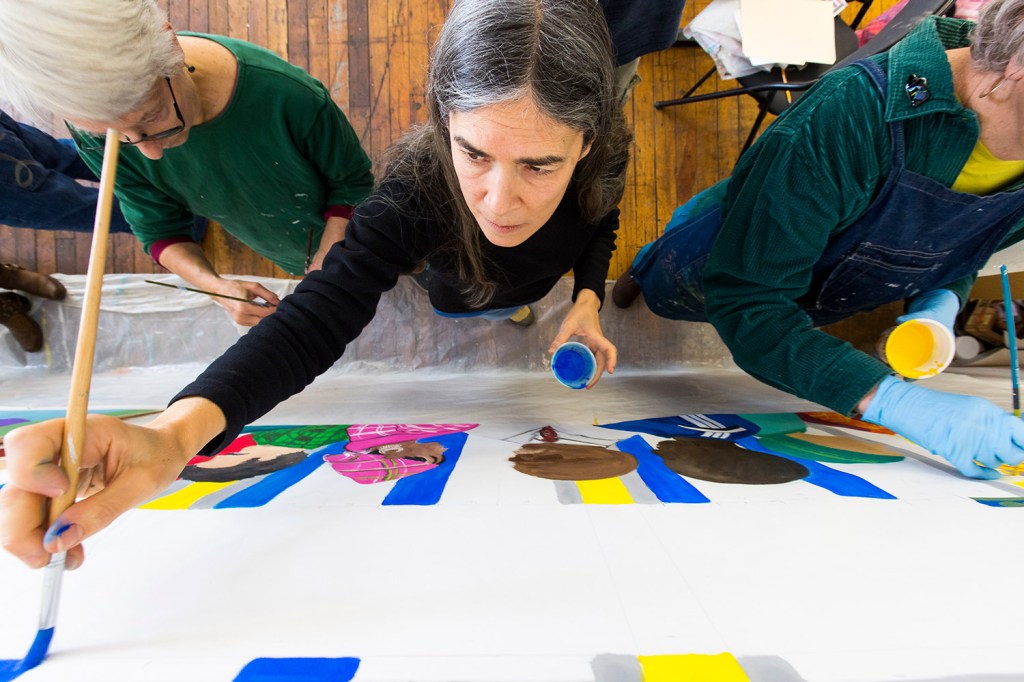
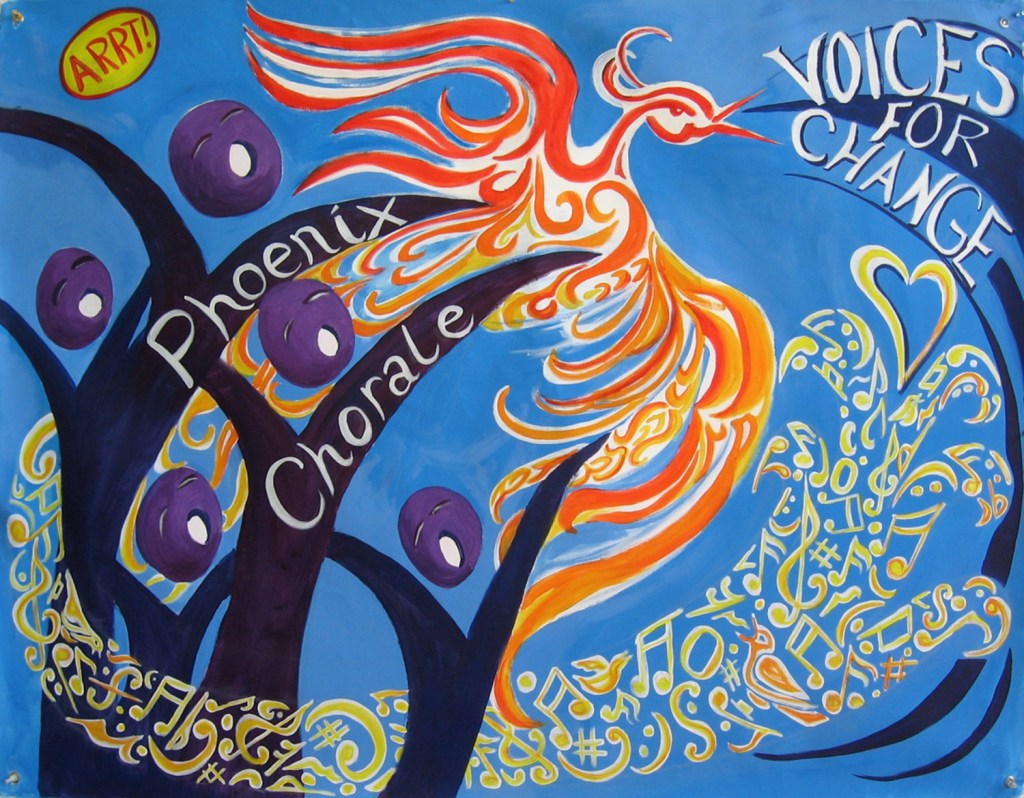
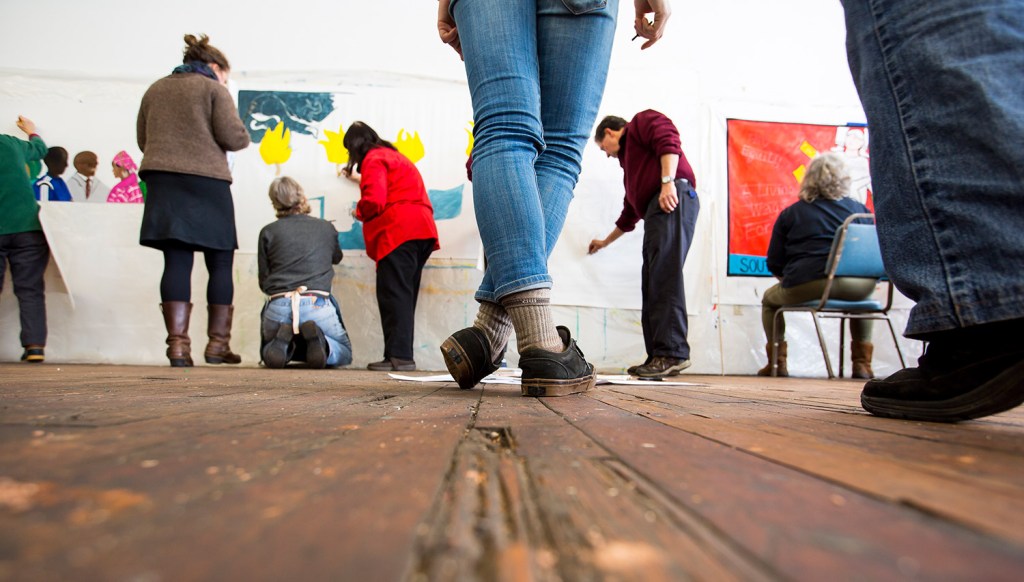
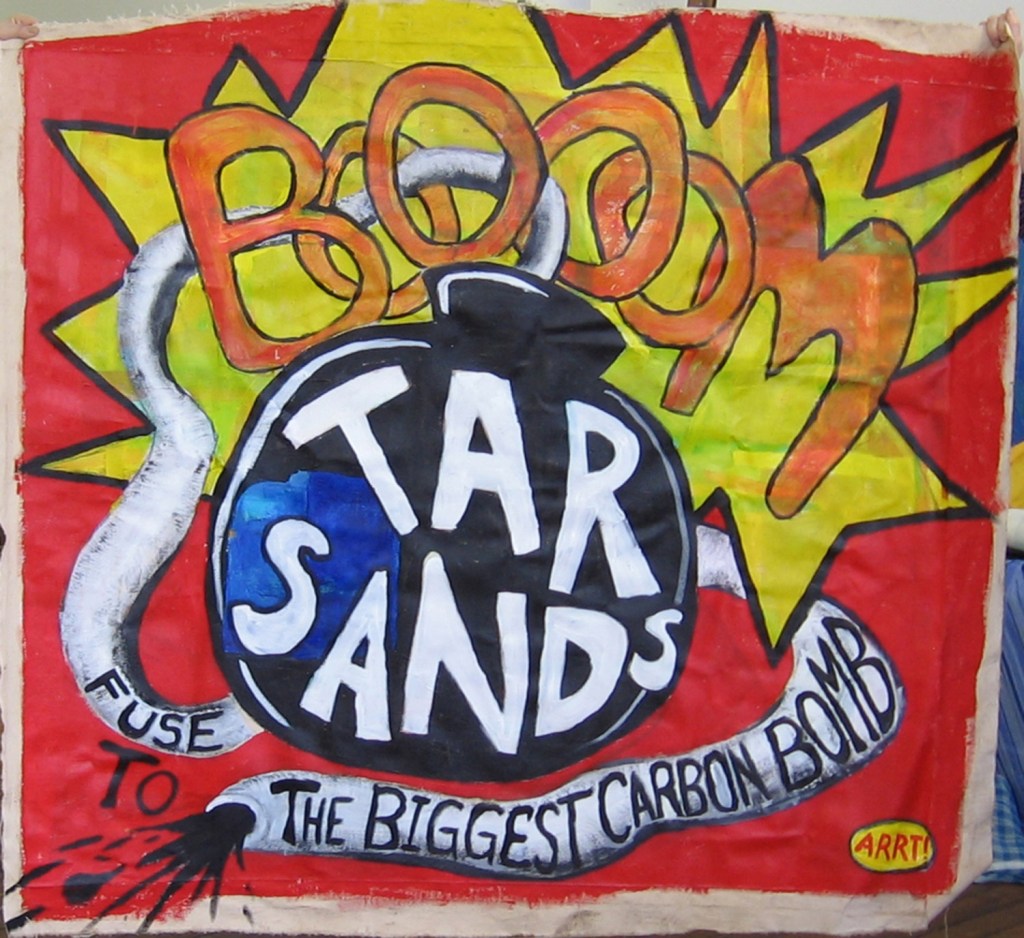
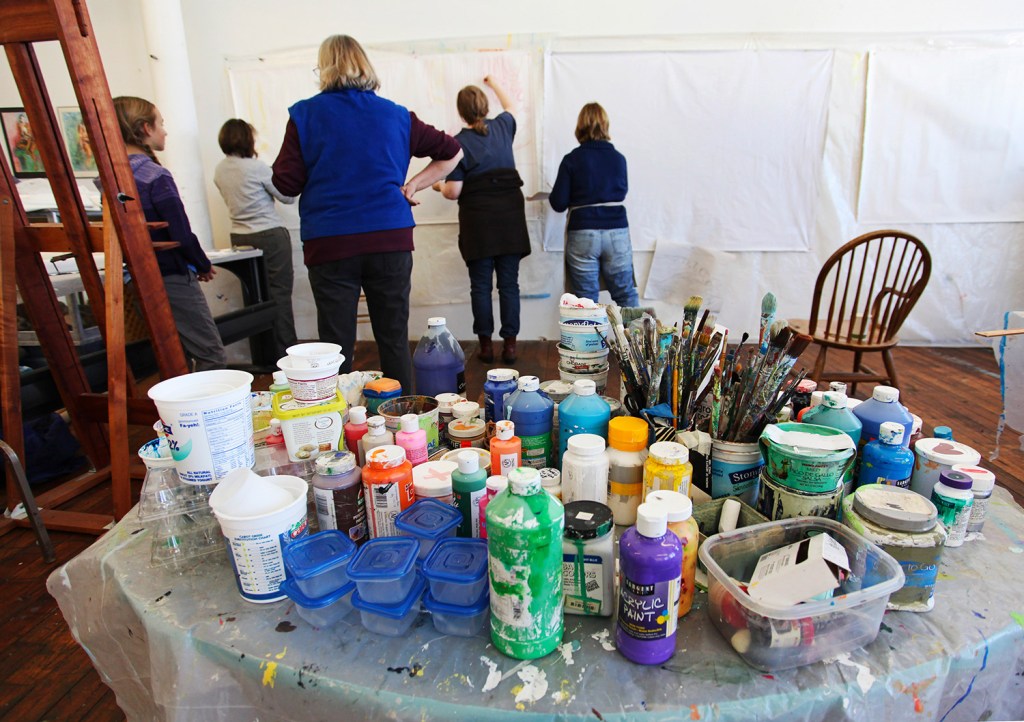
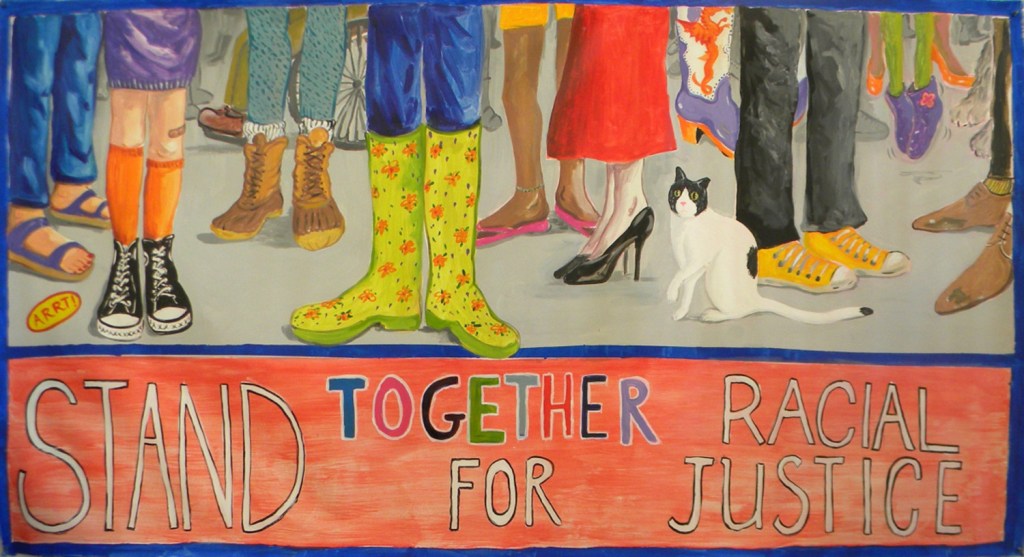
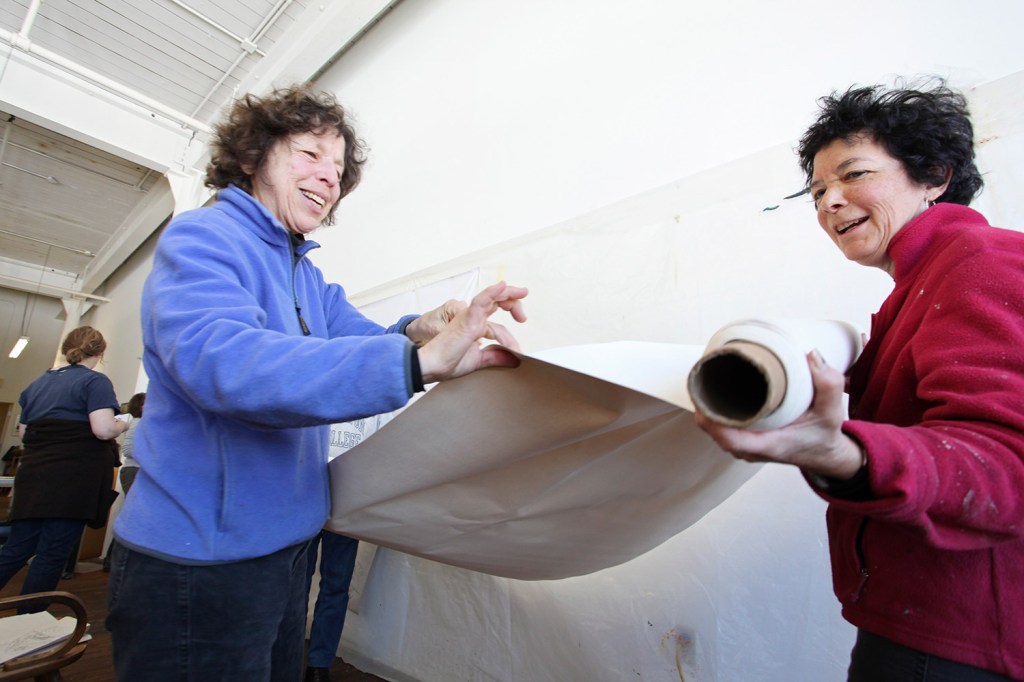
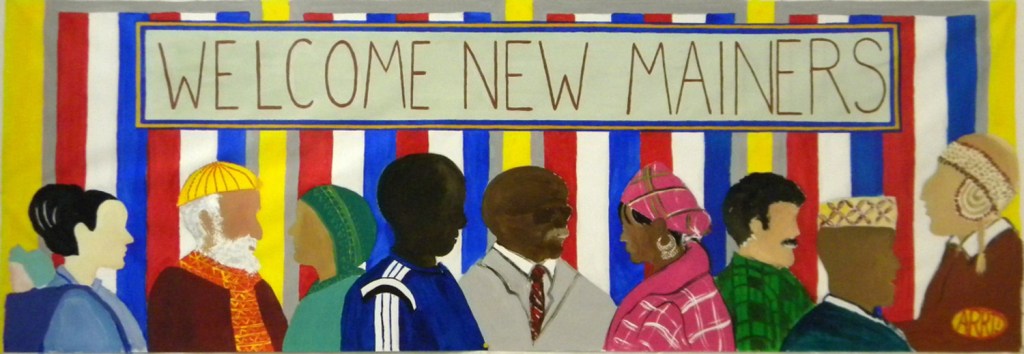
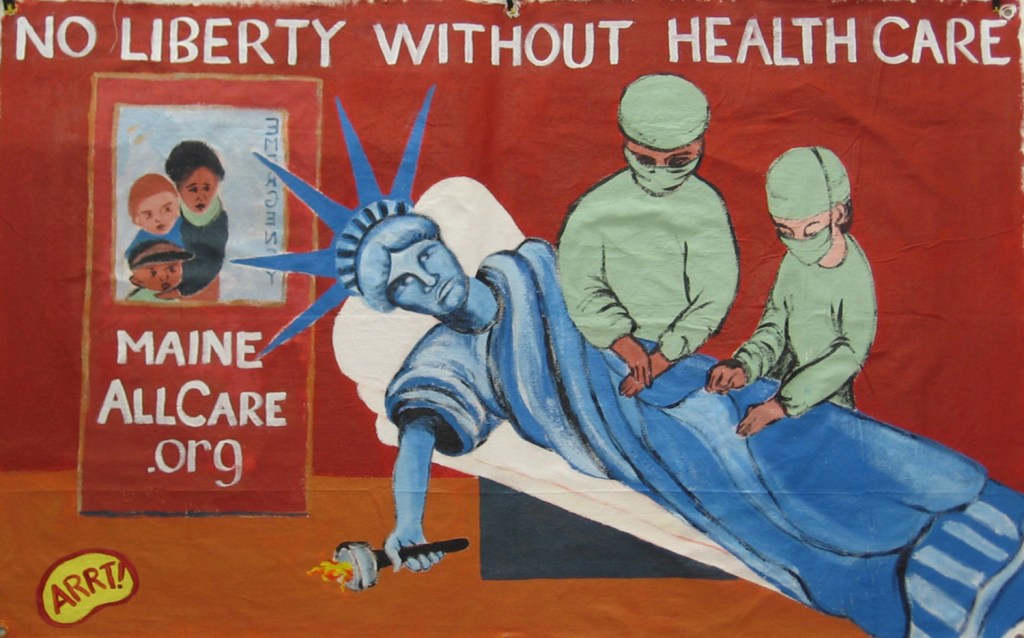
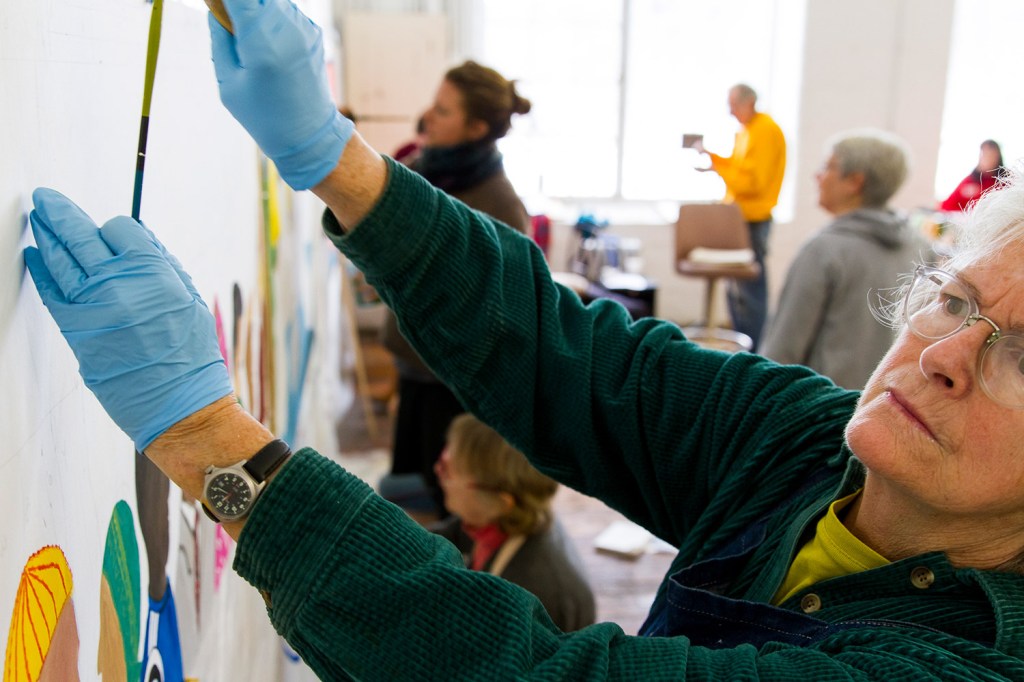
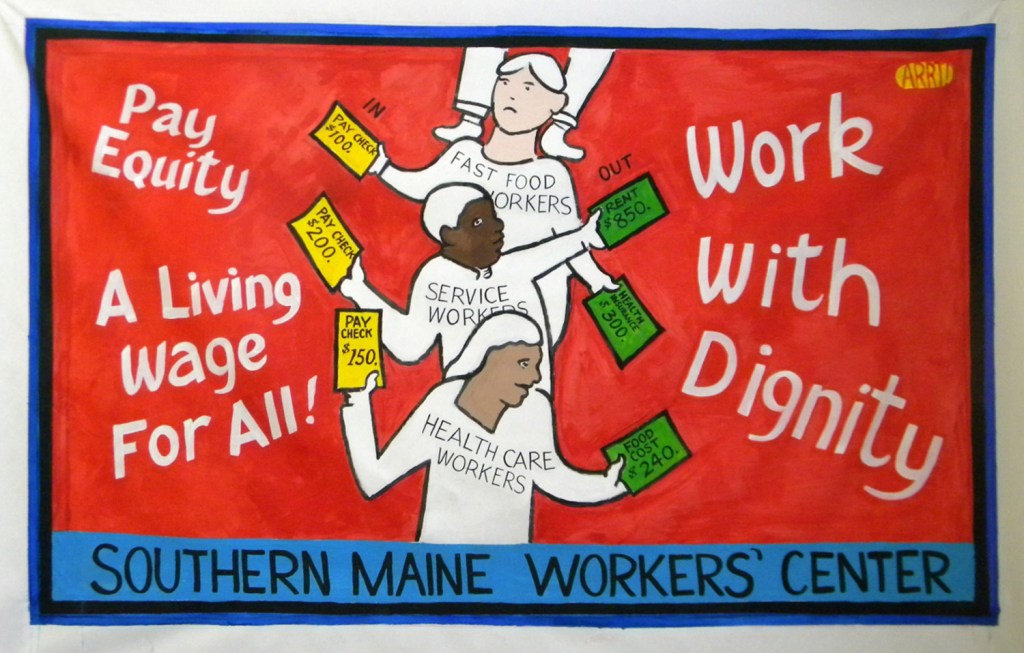
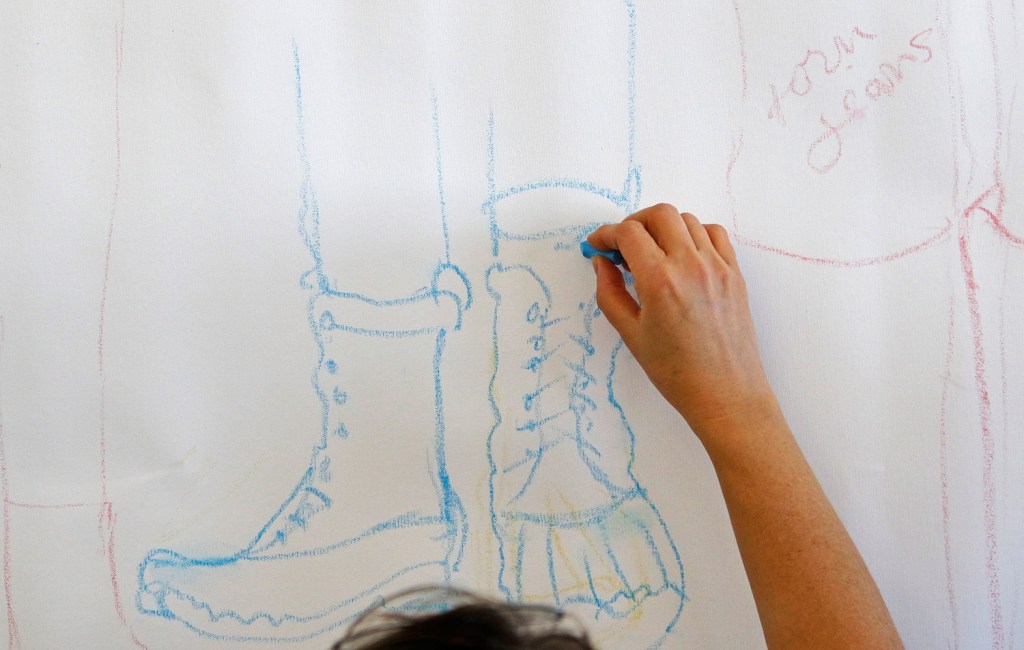
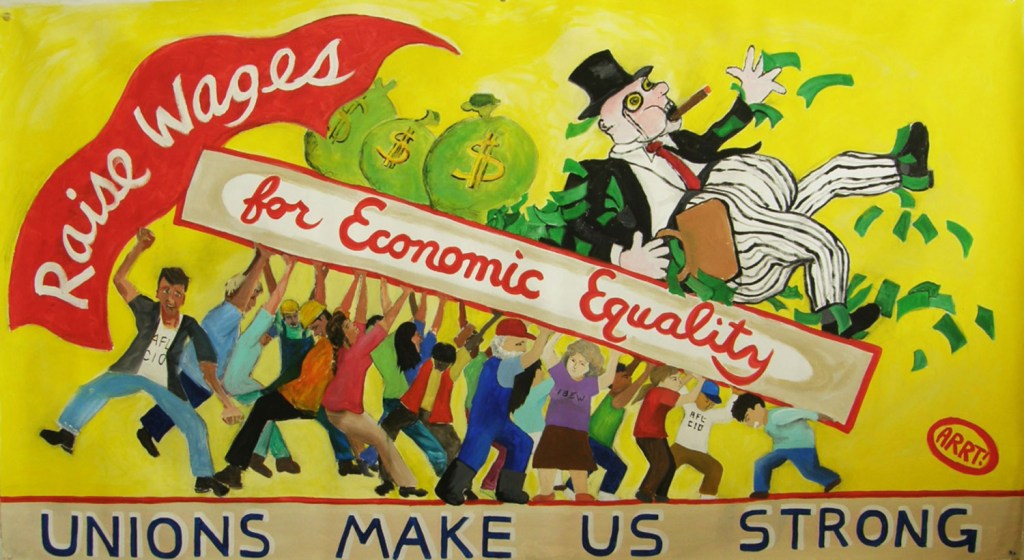
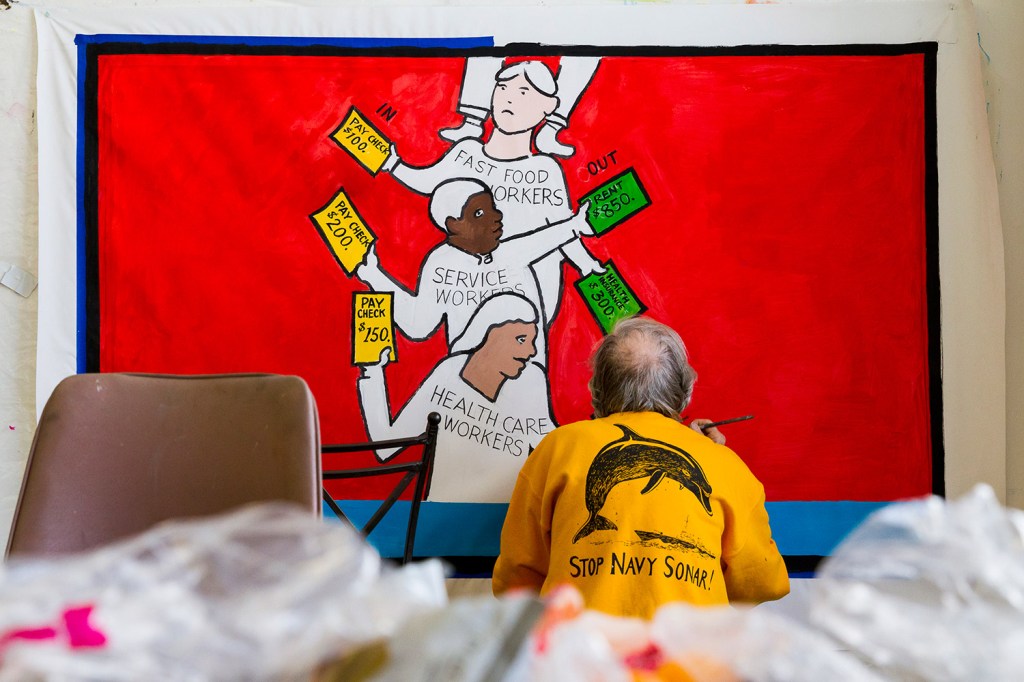
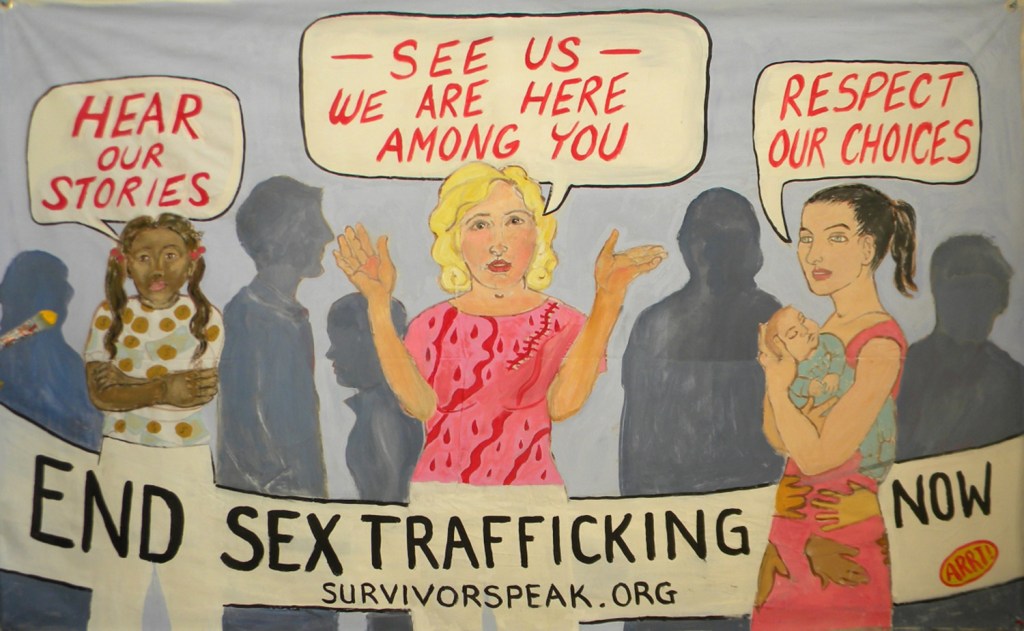
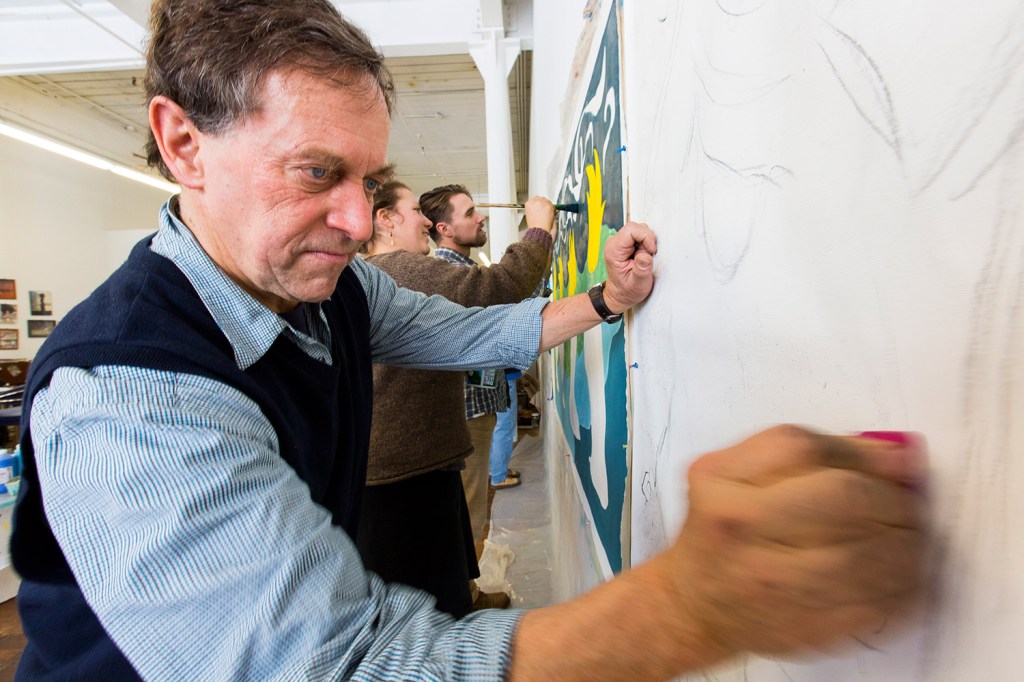
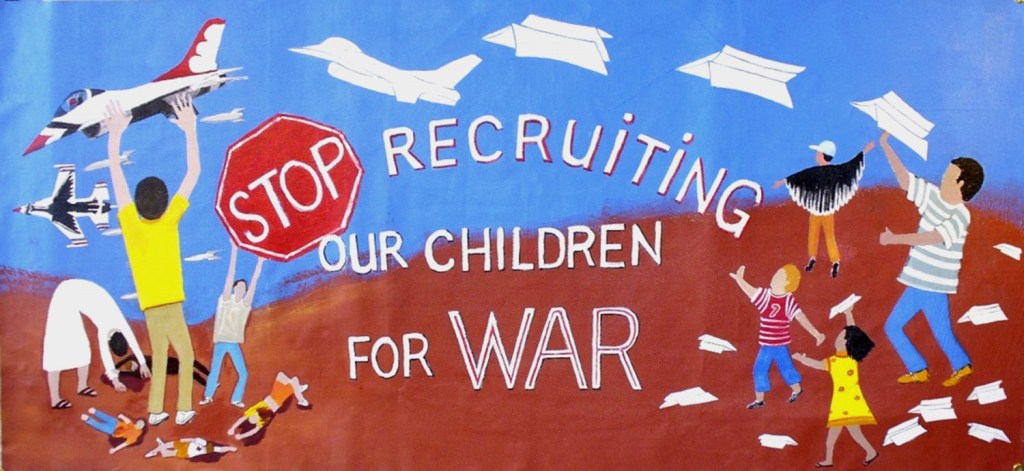
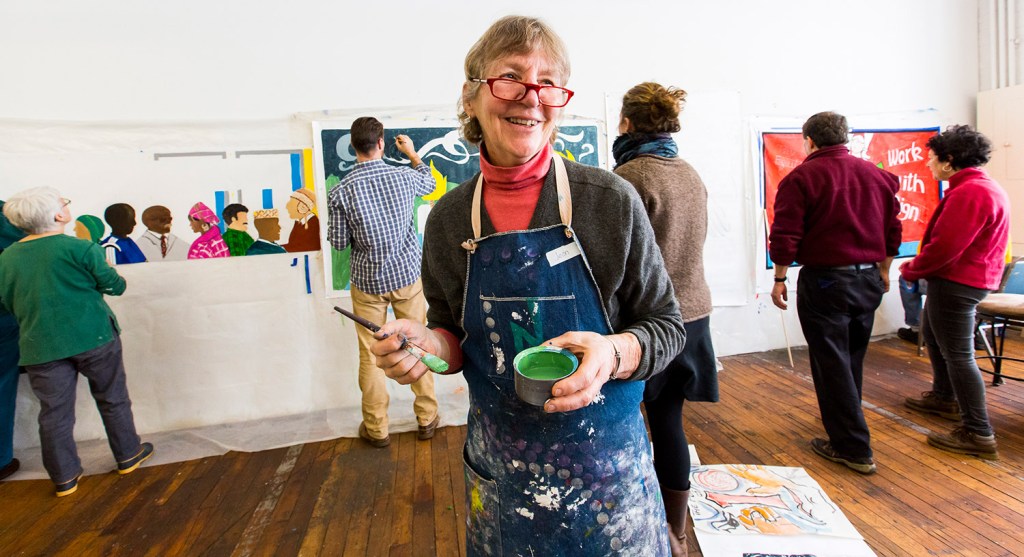
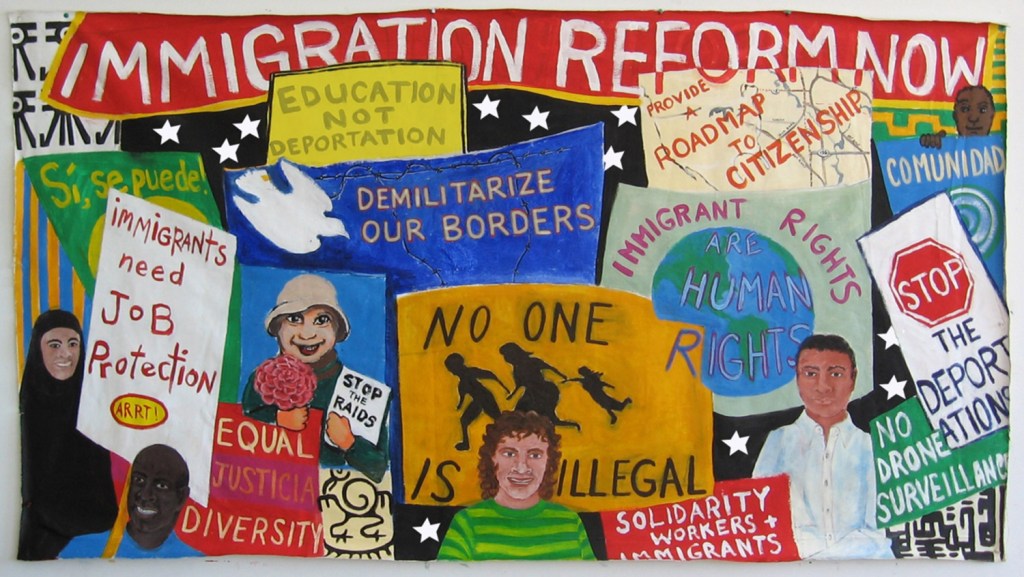

Success. Please wait for the page to reload. If the page does not reload within 5 seconds, please refresh the page.
Enter your email and password to access comments.
Hi, to comment on stories you must . This profile is in addition to your subscription and website login.
Already have a commenting profile? .
Invalid username/password.
Please check your email to confirm and complete your registration.
Only subscribers are eligible to post comments. Please subscribe or login first for digital access. Here’s why.
Use the form below to reset your password. When you've submitted your account email, we will send an email with a reset code.